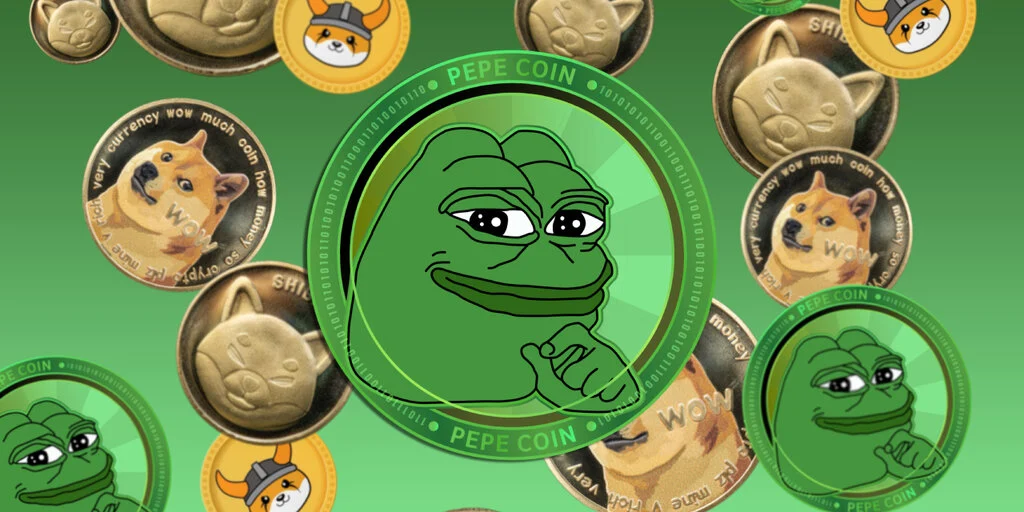
Memecoins, once seen as a novelty in the world of cryptocurrency, have evolved into a dynamic and integral part of the digital asset landscape. What started with the playful and irreverent Dogecoin has since expanded into a vast array of meme-inspired tokens like Shiba Inu, Pepe, Floki, and WEN—each with varying degrees of success, community involvement, and market impact.
As we move into 2025, the memecoin market finds itself at a crossroads. What was once an unregulated and freewheeling sector is now under increasing scrutiny from governments and financial regulators. Whether it’s anti-money laundering (AML) rules, taxation frameworks, or central bank digital currencies (CBDCs), regulatory forces are coming into play, and how memecoins adapt will have lasting effects on their viability, innovation, and cultural significance.
In this post, we’ll explore how the evolving regulatory landscape will shape the next generation of memecoins, and what that means for investors, creators, and communities in the crypto space.
The Current State of Memecoins: A Wild West with a Big Price Tag

Memecoins may have started as digital jokes, but over time, they’ve turned into serious business. Take Dogecoin, for example—it went from being a meme to becoming one of the largest cryptocurrencies by market cap, with billions of dollars flowing in and out of the asset. Similarly, Shiba Inu gained global attention as a so-called “Dogecoin killer,” earning itself a spot as one of the top tokens in the market.
Despite their successes, memecoins remain highly speculative, volatile, and often ridiculed by critics who argue that they lack real utility. But the market doesn’t care—community-driven tokens with no clear use case continue to show explosive growth based largely on internet culture, social media virality, and influencer endorsements.
However, the winds are changing. In the face of growing concern over money laundering, fraud, investor protection, and the broader stability of financial systems, governments and regulators are stepping in with more defined policies.
The Growing Influence of Regulations on Crypto

Cryptocurrencies—memecoins included—have long thrived in a regulatory gray area. Governments have been slow to enact clear laws, resulting in confusion about how digital assets should be classified, taxed, or integrated into the broader financial system.
But the regulatory landscape is shifting. Countries around the world are implementing new measures to address crypto’s rise. Let’s break down the most important regulatory trends that are likely to shape the future of memecoins.
1. Classification of Digital Assets
One of the key regulatory challenges surrounding memecoins is how they are classified. Governments are starting to define cryptocurrencies more clearly, with distinctions between securities and commodities.
- Securities Regulation: If a memecoin is considered a security (like a stock or bond), it would be subject to strict Securities and Exchange Commission (SEC) rules in the U.S. and similar regulations in other jurisdictions. This means disclosures, compliance, and investor protection measures would apply.
- Commodity Classification: In other cases, memecoins might be treated as commodities—like Bitcoin or gold—which means different sets of regulations apply.
A change in classification could affect everything from trading platforms (e.g., whether centralized exchanges are required to register) to liquidity pools, as different legal frameworks will impact how tokens are marketed, sold, and exchanged.
2. Anti-Money Laundering (AML) and Know Your Customer (KYC) Rules
As cryptocurrency becomes more mainstream, regulatory bodies are pushing for stronger AML and KYC protocols across the crypto ecosystem. The idea is to prevent illegal activities like money laundering, terrorist financing, and tax evasion.
For memecoin creators and platforms, this means:
- Exchanges will likely be required to implement KYC processes, meaning users will have to prove their identity before they can trade memecoins.
- Token creators may need to be more transparent about their tokenomics, the origin of liquidity, and the real-world implications of their projects.
For memecoins, this could either stifle their grassroots, community-driven nature or legitimize them in the eyes of regulators and institutional investors. The latter is more likely if the token can demonstrate a positive, transparent ecosystem that reduces fraud risk.
3. Taxation and Reporting Requirements
Tax authorities are becoming increasingly vigilant about crypto, and memecoin holders are no exception. In many countries, cryptocurrency gains are taxed as capital gains—including profits from memecoins. The main question here is how well tax authorities can track transactions on decentralized networks.
- Reporting Obligations: If memecoins gain recognition as legitimate investments, holders may be required to report their gains or losses. This could be especially impactful for retail investors who often trade memecoins without understanding the tax implications.
- Tax on Transactions: Additionally, governments may start imposing taxes on each memecoin transaction, similar to how they tax stock trades. This could lead to a “regulatory burden” that might deter casual investors.
How the New Regulatory Landscape Could Shape the Next Generation of Memecoins

As the regulatory environment becomes clearer, we can expect to see several key changes in the development and deployment of memecoins.
1. More Transparent and Responsible Projects
In order to comply with regulations, future memecoin projects may need to adopt a more professional and transparent approach. This could include:
- Providing clearer disclosures about the token’s purpose, value proposition, and roadmap.
- Auditing smart contracts and ensuring they comply with AML and KYC regulations.
- Developing safeguards to protect against pump-and-dump schemes and scams.
This shift could lead to more sustainable memecoin projects that focus on long-term value rather than short-term hype.
2. Regulated Memecoin Exchanges
With increasing regulations, exchanges that list memecoins will be required to follow stringent compliance standards. This could result in the consolidation of exchanges that focus on compliant tokens and weed out those that don’t adhere to regulations.
At the same time, new exchanges might emerge that specialize in regulated memecoin trading, offering features like zero-knowledge proofs, KYC integration, and AML compliance.
3. Innovation in Use Cases
As memecoins mature, there will likely be a shift from purely speculative tokens to projects with more tangible use cases. Regulatory compliance could push memecoins into:
- DeFi platforms where they can be used for staking, liquidity pools, or governance.
- NFT ecosystems where meme tokens act as access tokens to exclusive content or digital experiences.
- Charitable causes—as many meme tokens have already done—allowing users to donate funds to causes directly via blockchain.
A regulated, purpose-driven memecoin with genuine use cases could signal the beginning of the next era for meme-inspired tokens.
What This Means for Investors and Creators
For investors, understanding the evolving regulatory landscape is crucial. Regulatory clarity could lead to a more stable market for memecoins, as it encourages institutional investment, increases investor protection, and reduces fraud. However, it could also create barriers to entry, especially for projects that are less transparent or those that focus purely on speculation.
For creators and communities, embracing regulation doesn’t mean sacrificing the fun, community-driven aspects of memecoins. It means taking responsibility for the ecosystem they build and ensuring that memecoins can be both entertaining and sustainable in the long run.
Final Thoughts: A Balancing Act Between Fun and Compliance
The regulatory landscape is reshaping how the next generation of memecoins will evolve. While the early days of memecoins were largely about creating a cultural phenomenon, the future will be shaped by those who can balance community-driven fun with regulatory compliance. Those that succeed will likely be the memecoins that build for the long-term, offering both entertainment and utility in a regulated framework that reassures investors and governments alike.
As memecoins continue to evolve, the space is likely to become more professional, more transparent, and perhaps—just maybe—more useful than ever before.

